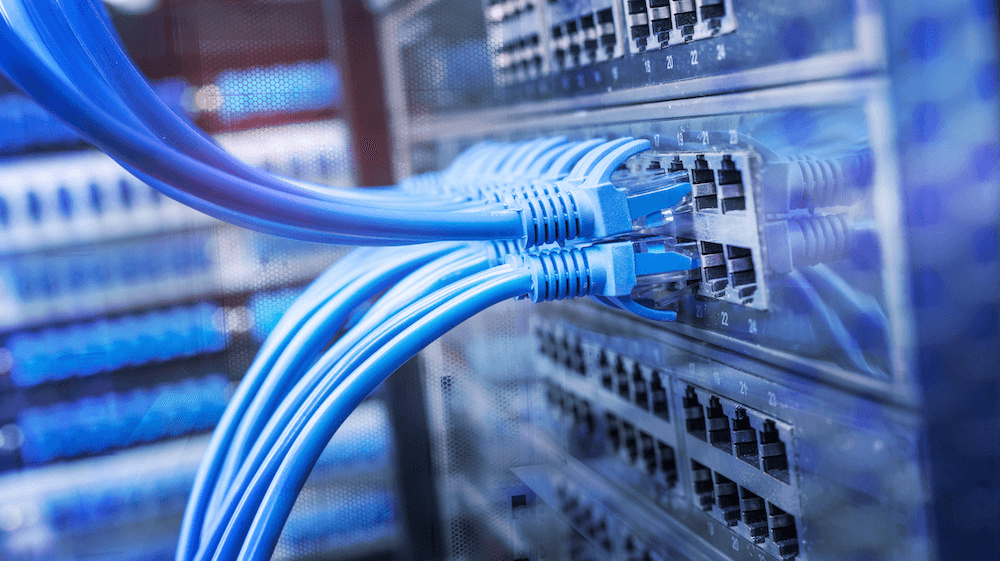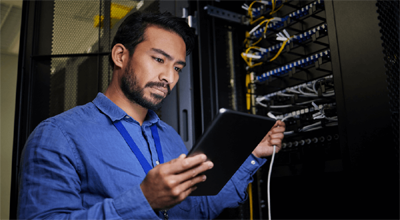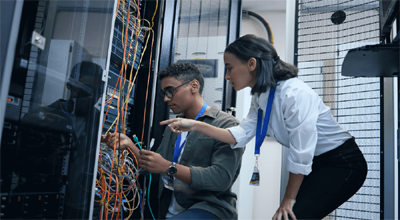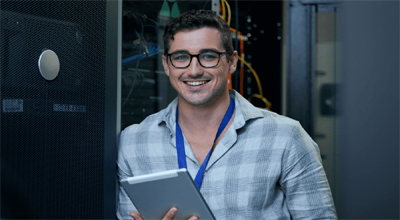 Les réseaux sont essentiels dans tous les secteurs d'activité, c'est pourquoi la demande de compétences en matière de réseau ne cesse d'augmenter. Une solide connaissance de base des réseaux peut mener à une carrière réussie dans l'IT.
Les réseaux sont essentiels dans tous les secteurs d'activité, c'est pourquoi la demande de compétences en matière de réseau ne cesse d'augmenter. Une solide connaissance de base des réseaux peut mener à une carrière réussie dans l'IT.Le parcours Technicien réseau vous prépare à la certification CCST (Network Support Technician) et vous parmet de décrocher des postes de base tels que technicien d'assistance réseau, technicien de centre d'assistance ou spécialiste de l'assistance informatique.
Vous apprendrez comment les réseaux fonctionnent, y compris les périphériques, les supports et les protocoles qui permettent la communication sur le réseau. Développez des compétences clés pour effectuer un dépannage de base, en utilisant des méthodologies efficaces et les bonnes pratiques du centre d'assistance.
Bien que ce ne soit pas obligatoire, il est recommandé d'avoir des connaissances de base sur le matériel informatique et les systèmes d'exploitation pour entamer un parcours professionnel.
Programme de formation
Networking Basics
Communication in a Connected World
Network Components, Types, and Connections
Wireless and Mobile Networks
Building a Home Network
Network Components, Types, and Connections
Wireless and Mobile Networks
Building a Home Network
Communication Principles
Network Media
The Access Layer
Network Media
The Access Layer
The Internet Protocol (IPv4)
IPv4 and Network Segmentation
IPv6 Addressing
Dynamic Addressing with DHCP
IPv4 and Network Segmentation
IPv6 Addressing
Dynamic Addressing with DHCP
Gateways to Other Networks
The ARP Process
Routing Between Networks
The ARP Process
Routing Between Networks
TCP and UDP
Application Layer Services
Network Testing Utilities
Application Layer Services
Network Testing Utilities
Checkpoint Exams throughout the course
Networking Basics Course Final Exam
Networking Basics Course Final Exam
Networking Devices and Initial Configuration
- Hierarchical network design principles and reliable network structures.
- Overview of cloud services and virtualization technologies.
- Binary and hexadecimal number systems.
- Ethernet frames, MAC addresses, and switching processes.
- Characteristics of IPv4 and IPv6 packets.
- Understanding and structuring IPv4 addresses.
- Address Resolution Protocol (ARP).
- DNS and DHCP services.
- TCP/UDP protocols, port numbers, and communication processes.
- Navigation and basic commands for Cisco IOS.
- Basic configuration of switches, routers, and securing devices.
- Using Ping and Traceroute for network testing.
Network Addressing and Basic Troubleshooting
- Course overview and objectives.
- Physical Layer characteristics
- Copper and Fiber cabling
- Copper and Fiber cabling
- Network topologies and MAC methods
- Host routing, routing tables
- IPv6 types, static and dynamic configuration
- Neighbor Discovery protocol operation
- Switch and router boot processes
- Physical and wireless troubleshooting
Network Support and Security
- Diagnostics and troubleshooting
- Network documentation
- Help desks
- Troubleshooting endpoint connectivity
- Troubleshooting networks
- Remote connectivity troubleshooting
- Network documentation
- Help desks
- Troubleshooting endpoint connectivity
- Troubleshooting networks
- Remote connectivity troubleshooting
- Common threats
- Deception
- Cyber attacks
- Wireless and mobile device attacks
- Application attacks
- Deception
- Cyber attacks
- Wireless and mobile device attacks
- Application attacks
- Security foundations
- Access control
- Defending systems and devices
- Antimalware protection
- Firewalls and host-based intrusion prevention
- Secure wireless access
- Access control
- Defending systems and devices
- Antimalware protection
- Firewalls and host-based intrusion prevention
- Secure wireless access

 Prix: 10 000 DA
Prix: 10 000 DA


